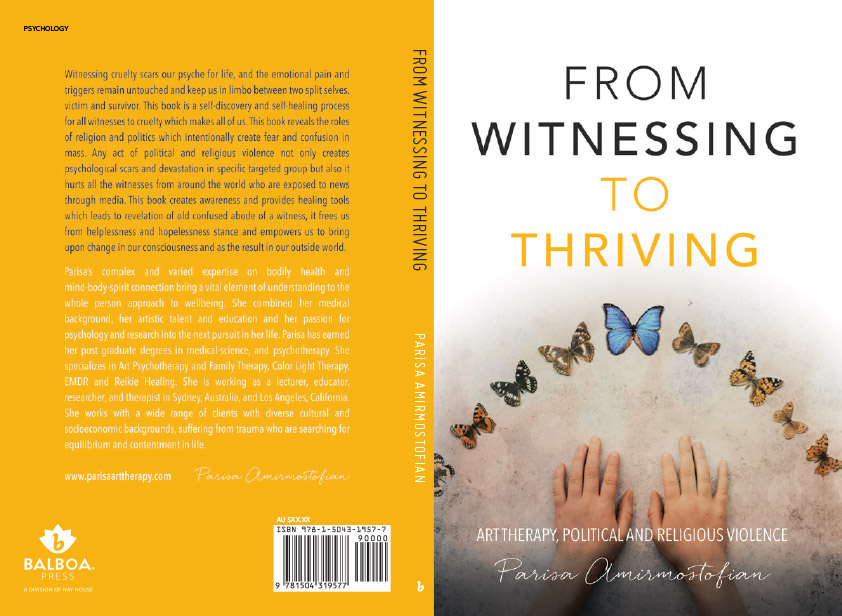From Witnessing to Thriving

Read Parisa's new book: From Witnessing to Thriving - Available on now Amazon
Witnessing cruelty scars our psyche for life, and the emotional pain and triggers remain untouched and keep us in limbo between two split selves, victim and survivor. This book is a self-discovery and self-healing process for all witnesses to cruelty which makes all of us. This book reveals the roles of religion and politics which intentionally create fear and confusion in mass. Any act of political and religious violence not only creates psychological scars and devastation in specific targeted group but also it hurts all the witnesses from around the world who are exposed to news through media. This book creates awareness and provides healing tools which leads to revelation of old confused abode of a witness, it frees us from helplessness and hopelessness stance and empowers us to bring upon change in our consciousness and as the result in our outside world.

